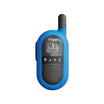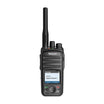Understanding Adjacent Channel Selectivity (ACS)
In the complex world of radio communications, clarity and precision are not merely beneficial; they are essential. This is where the concept of Adjacent Channel Selectivity (ACS) comes into play, particularly in the realm of two-way radio systems. ACS is a critical parameter that measures a radio receiver's ability to discern and process a desired signal, while simultaneously rejecting interference from signals present on adjacent channels.
The Role of ACS in Two-Way Radio Systems
Two-way radios are indispensable tools in various sectors such as public safety, construction, and transportation, where clear and uninterrupted communication is vital. However, these devices operate within a spectrum crowded with numerous channels, where signals can easily overlap or interfere with one another. ACS is crucial in this environment; it ensures that a receiver can effectively filter out unwanted signals from neighboring channels, which could otherwise degrade the quality of the communication or even block it entirely.
The significance of ACS becomes even more pronounced in high-density areas where the radio spectrum is heavily utilized. Here, radios with poor adjacent channel selectivity can experience cross-channel interference, leading to miscommunications or lost messages. On the other hand, radios with high ACS ratings are more capable of delivering clear, reliable communications even in the presence of strong nearby signals. This capability is particularly crucial during emergency situations where clear communication can be a matter of life and death.
Improving Communications with Advanced ACS
The integration of advanced ACS technology into two-way radio systems has transformed the reliability and effectiveness of radio communications. Modern digital radios are equipped with sophisticated filtering mechanisms that enhance ACS, allowing these devices to isolate the intended communication with greater precision than ever before.
For businesses and agencies relying on two-way radios, selecting devices with high ACS ratings is a strategic decision. It's not just about improving individual conversations; it's about elevating the entire communication network's resilience against interference. By investing in radios with superior ACS, organizations can reduce the likelihood of communication failures, enhance operational efficiency, and improve overall safety.
Conclusion
Adjacent Channel Selectivity is more than just a technical specification; it's a fundamental feature that defines the performance and reliability of two-way radio systems. As the demand for clearer, more reliable communication continues to rise, the importance of ACS in radio design and selection cannot be overstated. By understanding and prioritizing ACS, users and manufacturers of two-way radios can ensure that their communications are clear, efficient, and uninterrupted, paving the way for safer and more effective operations across all sectors.









































